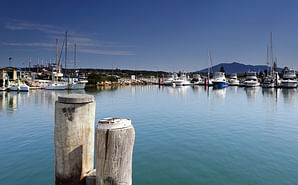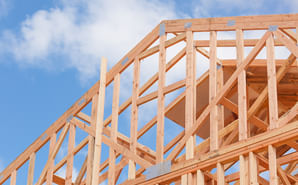Fire safety certification
When building a Class 2 to Class 9 building a number of fire safety measures and reporting obligations need to be complied with under Part 9 of the Environmental, Planning and Assessment Regulation 2000.
Class 2 to Class 9 buildings
When building a Class 2 to Class 9 building a number of fire safety measures and reporting obligations need to be complied with under Part 9 of the Environmental, Planning & Assessment Regulation 2000. Existing owners also have responsibility to maintain fire safety standards and report on these annually. Council can penalise owners who do not comply with fire safety regulations.
Class 2 to Class 9 buildings are:
- Residential flat buildings
- Certain dual occupancies
- Townhouse developments
- Shops and restaurants
- Office buildings
- Public assembly buildings
- Nursing homes
- Industrial buildings and warehouses
- Places of shared accommodation
Fire safety schedules
With new buildings a Fire Safety Schedule will be issued alongside the Construction Certificate or Complying Development Consent. It can also be issued when the Development Application is approved. The Fire Safety Schedule will list the fire safety measures that need to be installed and the Australian and/or other Standards to which they must comply with. Older buildings will be subject to a Fire Safety Schedule if development consent is sought for work on the building. In some cases, existing buildings may already have a Fire Safety Schedule issued with a Building Application prior to 1997. A Fire Safety Schedule may also be issued if Council conducts a fire safety audit of the premises.
Essential fire safety measures
Essential fire safety services encompass a number of fire safety measures to be carried out within a building or premises. Examples of these services include:
- Automatic fire suppression (sprinkler) systems
- Emergency lighting
- Exit signs
- Exit systems and paths of travel to exits
- Fire doors
- Fire drenchers
- Fire extinguishers
- Fire hose reels
- Fire hydrants
- Smoke detection and alarm systems
- Smoke exhaust systems
- Solid-core doors
Fire safety certificates
A Fire Safety Certificate is a certificate that is submitted to Council by the owner or manager of a building. It certifies that each of the specified fire safety measures listed in the Fire Safety Schedule have been installed and operate to the performance standard listed in the Fire Safety Schedule.
A Fire Safety Certificate is required to be submitted to Council prior to a new building or new additions being occupied and must be issued prior to the occupation of a building.
Annual fire safety statements
Every 12 months after the Fire Safety Certificate is issued, an Annual Fire Safety Statement must be prepared and given to Council council@begavalley.nsw.gov.au and NSW Fire and Rescue firesafety@fire.nsw.gov.au. The Annual Fire Safety Statement must certify that a professional fire and building consultant has inspected the building, assessed the fire safety measures, and found they continue to meet standards set out in the Fire Schedule.
Display of certification
A copy of the Fire Safety Certificate and Fire Safety Statement is required to be displayed within the building in a conspicuous position.
Fire Safety Orders
When levels of fire safety in a building are not up to standard Fire Safety Orders are issued by Council. Fire Safety Orders can also be issued as Emergency Orders. Where an Emergency Fire Safety Order is not complied with Council will seek court directions to have the work done.
Council can also issue a Notice of Intention to Give an Order where a lesser fire risk is evident or the work will be more extensive.
Compliance
Council may issue a penalty infringement notice if fire safety measures are not kept up to standards or if the Annual Fire Safety Statement is not submitted.






